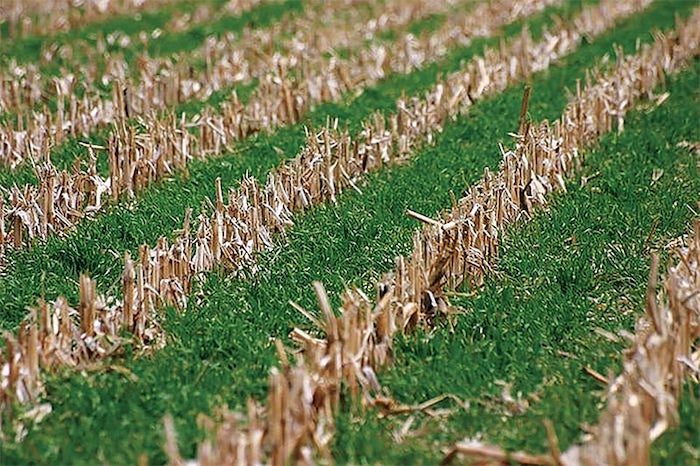Farmers fear drought because it leads to reduced crop yields and profits.
Worldwide, drought is affecting a number of countries: China, Argentina, Europe and the U.S. California, Arizona, Texas, Kansas and Oklahoma have experienced severe drought soil conditions this year.
The Midwest is dry and experiencing drought problems, especially barge traffic on the Mississippi River. Many farmers want to know what is the probability of a drought next year?
Currently, a strong La Nina for the past 3 years is transitioning to a El Nino, perhaps by late summer of 2023. In most cases, a strong El Nino signals an increased probability of a drought in the Midwest. Coupled with La Nina and El Nino ocean currents, there are increased solar flares and sun spot activity expected to peak by 2025. While droughts are hard to predict, there is probability of dry soil conditions or a drought in the next couple of years. If you knew a drought was coming, how would you change your farming practices?
Here are a few tips starting this fall:
First, the debate in dry states is do cover crops take moisture out of the soil? Yes — about 6.5 inches of moisture for winter and spring growth. However, due to increased snow trapping, increased water infiltration and higher soil organic matter (cooler summer soils hold more water), cover crops are at least neutral to positive on overall soil moisture. Most cover crops, especially cereal rye, reduce weed pressure, which robs soil moisture and hurts crop yields. Cover crop residue and roots are an easily absorbed source of carbon and micronutrients in healthy soils.
Second, autumn is the time to start selecting crop varieties for next year. If drought is a concern, select workhorse, not racehorse crop varieties. Racehorse crop varieties may be the highest yielding in a good year but are not as yield resilient when dry weather conditions occur. Also, consider avoiding glyphosate or Roundup ready crops. Glyphosate is a major chelator of micronutrients and makes it harder for crops to access these vital nutrients in dry weather. If possible, plan to start controlling broadleaf weeds this fall.
For corn varieties, look for fast emergence, a large, aggressive root system, upright leaves and an earlier maturing corn variety. Early maturing corn planted early takes advantage of late spring and early summer rains before hot, dry weather sets in. If dry soil conditions are expected and irrigation is not possible, lower your corn seeding rate per acre. Rain makes grain, especially at pollination. Corn that pollinates later during a hot dry spell may experience reduced crop yields. Plant corn 2-3 inches deep and soybeans 1.5-2 inches deep.
For soybeans, look for an early maturing bean, fast emergence and a variety that has the ability to bush out. Inoculate your soybeans with Rhizobia to increase nodules and yield. Farmers should evaluate their soybean roots every year because the amount of soybean nodules directly affects soybean yields. Soybeans get their nitrogen from the atmosphere, so good soil structure improves nodulation. If possible, avoid drilling soybeans and plant in 10-15 inch or wider crop rows. Considering lowering your soybean population by 10-15%. Soybeans that are spaced wider apart tend to bush out, have thicker stems and have deeper roots, making them more drought resistant.
Third, in the spring, reduce or stop tillage. Each tillage pass reduces soil moisture 0.5-1/acre-inch. If the spring turns dry early, ideally kill cover crops early and plant early. If the spring is wet and cold (typical spring weather), let the cover crop grow, plant green, then terminate the cover crop to keep soils cooler and to conserve moisture. The biggest mistake on cover crops occurs when farmers wait too long to terminate them. Maryland farmers, who have been paid to plant cover crops for 30 years, have learned that they can get their cash crop planted 5-10 days earlier in cover crops due to increased soil structural stability. In the spring, cover cropped soil may not be as wet as you think, so try planting a little earlier. Ohio farmers may be missing an opportunity to plant earlier which then impacts crop yields.
Fourth, getting nutrients into a plant is a key to getting good yields. Consider adding an arbuscular mycorrhizae fungi (AMF) seed or soil biological to increase nutrient uptake. AMF help bridge dry soils and are a reservoir of moisture during a drought. AMF increase plant micronutrient uptake needed to make enzymes activating plant genes that fight dry weather. Consider fertilizing with a micronutrient package, especially if soil and tissue tests levels are low. Knowing when a drought might occur is never a certainty, but it pays to plan ahead.







Post a comment
Report Abusive Comment